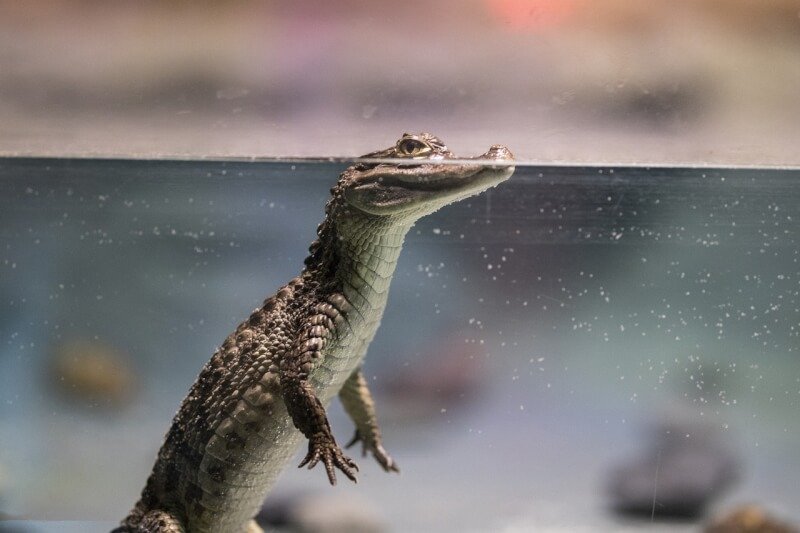So, you’ve decided to expand your reptile family by adding a new member. Exciting times lie ahead! But before you can sit back and watch your scaly friends bond, there’s the important task of introducing them to one another. This article is here to guide you through the process of introducing a new reptile to your existing one, ensuring a smooth transition and a harmonious reptile community. Whether you’re bringing home a snake, turtle, or lizard, we’ve got you covered with tips and tricks to make this introduction a success. Get ready for some reptile camaraderie!

1. Preparing for the Introduction
Before diving into the exciting process of introducing a new reptile to your existing reptile, it’s important to make sure you’re fully prepared. This means having the right equipment and setup in place to ensure a smooth transition and minimize any potential stress for both reptiles involved.
2. Choosing the Right Location
2.1. Isolation Room vs. Terrarium
One of the crucial decisions you’ll need to make is whether to introduce the new reptile in an isolation room or directly into the existing reptile’s terrarium. An isolation room allows for separate living spaces, minimizing the chances of any initial conflicts. On the other hand, introducing them directly into the terrarium can help establish a shared territory more quickly, although this option comes with increased risks of stress or aggression.
2.2. Temperature and Lighting
To ensure the well-being of both reptiles, it’s essential to provide the appropriate temperature and lighting conditions in the chosen location. Research the specific requirements of each reptile species, as they can vary significantly. Aim to create a comfortable environment that meets the needs of both reptiles, with adequate heat sources and appropriate UVB lighting.
2.3. Providing Hiding Spots
Reptiles thrive when they have a sense of security, so it’s important to provide ample hiding spots in the chosen location. This can be achieved by using various types of hides, such as caves, logs, or rock formations. Allowing each reptile to have its own hiding spot is crucial during the introductory phase, as it helps reduce potential conflicts and stress.

3. Gradual Introduction
3.1. Visual Introduction
Before proceeding with direct contact, it’s best to start with a visual introduction. This can be achieved by placing the new reptile’s enclosure within sight of the existing reptile’s terrarium. This visual interaction allows the reptiles to become familiar with each other’s presence without any direct physical contact.
3.2. Scent Introduction
Once the reptiles have grown accustomed to each other’s visual presence, you can progress to a scent introduction. This can be done by exchanging bedding or using a cloth to gently rub each reptile, then placing the scent-saturated items in the other reptile’s enclosure. By familiarizing themselves with each other’s scents, the reptiles can further establish a sense of recognition and acceptance.
3.3. Controlled Interaction
After successful visual and scent introductions, it’s time to move on to controlled interaction. This can be done by using a temporary divider within the shared terrarium or allowing brief supervised visits between the reptiles in a neutral area. Observe their behavior closely during these interactions to ensure they’re accepting each other’s presence and not displaying any signs of aggression.
4. Monitoring the Reptiles
4.1. Observing Behavior
Throughout the introduction process, it’s crucial to monitor the behavior of both the new and existing reptile. Watch for any signs of stress, aggression, or dominance. These signs can include hissing, puffing up, tail whipping, biting, or charging. If any aggression is displayed, separate the reptiles immediately and seek professional advice.
4.2. Ensuring Proper Nutrition
During the introduction phase, it’s important to ensure both reptiles are receiving proper nutrition. Each reptile should have access to a well-balanced diet that meets their specific dietary needs. Monitor their eating habits and make any necessary adjustments to ensure proper nutrition and prevent any potential conflicts arising from competition for food.
4.3. Handling and Bonding
As the reptiles begin to adjust to each other’s presence, you can start working on handling and bonding with them individually. Regular, gentle handling helps build trust and familiarity with their new environment and with you as their caretaker. Gradually introduce each reptile to being handled together, ensuring their comfort and safety at all times.

5. Troubleshooting Potential Issues
5.1. Aggression or Dominance
If you notice any aggression or dominance between the reptiles, it’s important to separate them immediately and reassess the introduction process. Consider going back a step or consulting with a reptile behavior specialist to address any underlying issues. Remember, their well-being and safety should always be the top priority.
5.2. Food Competition
Competition for food can sometimes arise during the introduction phase. To prevent conflicts, consider feeding the reptiles in separate areas of the terrarium or in their individual enclosures. This will help avoid competition and ensure each reptile receives the necessary nutrition without any stress or aggression.
5.3. Stress and Illness
Reptiles are sensitive creatures, and stress can greatly impact their health. It’s important to minimize stress levels as much as possible during the introduction process. Monitor for any signs of illness, such as decreased appetite, lethargy, or unusual behavior, and consult with a reptile veterinarian if needed.
6. Seeking Professional Advice
If you encounter any obstacles or concerns during the introduction process, don’t hesitate to seek professional advice. Reptile behavior specialists, veterinarians, or experienced reptile owners can provide valuable guidance and support based on their expertise. They can help troubleshoot any issues and offer personalized recommendations to ensure a successful introduction.

7. Final Thoughts
Introducing a new reptile to your existing reptile can be an exciting and rewarding experience. With proper preparation, gradual introduction, and careful monitoring, you can help create a harmonious living environment for both reptiles. Remember to prioritize their well-being, provide appropriate living conditions, and seek professional advice whenever necessary. With time and patience, you can foster a positive relationship between your reptiles and witness the joy of their coexistence.


